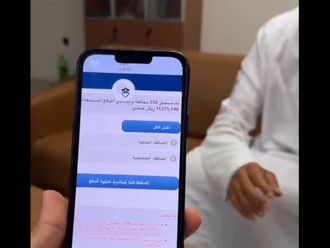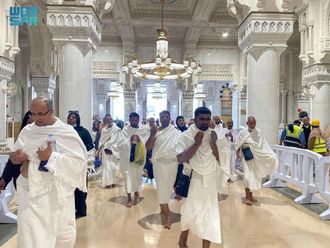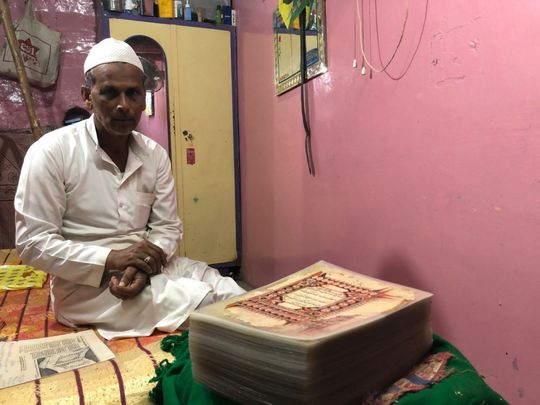
Bengaluru: As a hereditary caretaker of one of Deccan’s oldest dargahs (shrine), Rafeeq Ahmed Ghawwas is literally steeped in history, tracing his ancestry back to eight centuries!
But, that is not his real claim to fame.
Ghawwas is in possession of some prized remnants of Maratha, Mughal and Adil Shahi heritage, including a rare copy of the Holy Quran believed to be calligraphed by Mughal emperor Aurangzeb Alamgir!
“Our history in this region goes beyond eight centuries. The saint of this dargah Hazrat Syedina Shaikh Badruddin Shah Arif Chishti arrived in Deccan more than 800 years ago. He travelled extensively across southern India to spread the message of peace and love. He was among the first sufi saints to settle down in this region. Whatever we possess today in terms of heritage and heirloom is the legacy of our saint,” said Rafeeq Ahmed Ghawwas, who has been the caretaker of the dargah for 30 years.
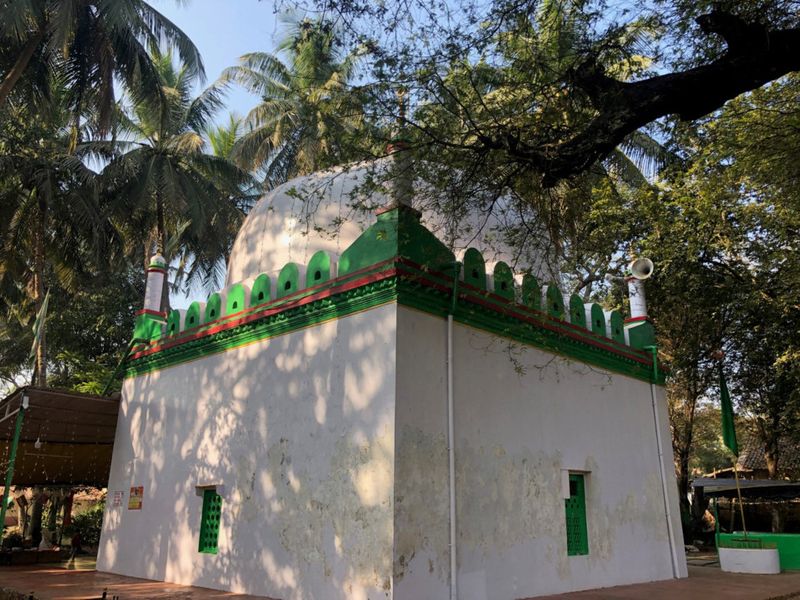
Shaikh Badruddin was originally from Delhi and he was a disciple of the revered Shaikh Qutubuddin Bakhtiyar Kaki, a 12th century saint and scholar based in Delhi.
Shaikh Badruddin migrated to Deccan on the advice of his spiritual master. He was the one who introduced the Chishti order of the highly venerated saint Khwaja Muinuddin Chishti of Ajmer in the south.
“Our ancestors were the disciples of Shaikh Badruddin and we have been in the service of this place since the earliest times. I took over as the caretaker of this dargah from my uncle Khattal Ahmed, who had taken over from my father Abdur Raheem Mujawar. Before him our grandfather Ebrahim Ahmed was the caretaker, who took over from his father Shaikh Jangu Mian,” said Ghawwas, referring to his lineage.
Located at the heart of the historic Belgaum Fort, this dargah and the saints of this order have had close ties with several dynasties across its history of almost 800 years.

According to Ghawwas, Shaikh Badruddin arrived in Belgaum in early 13th century and settled within the premises of the then newly built fort. The fort was built in 1204 AD by Raja Jaya Raya of the Ratta Dynasty and Shaikh Badruddin lived here until his death in 1251 AD.
“Kings, ministers and commanders of all faith used to venerate Shaikh Badruddin and offered their patronage to the dargah. We have all the archival records that reflect our rich and vibrant history,” added Ghawwas.
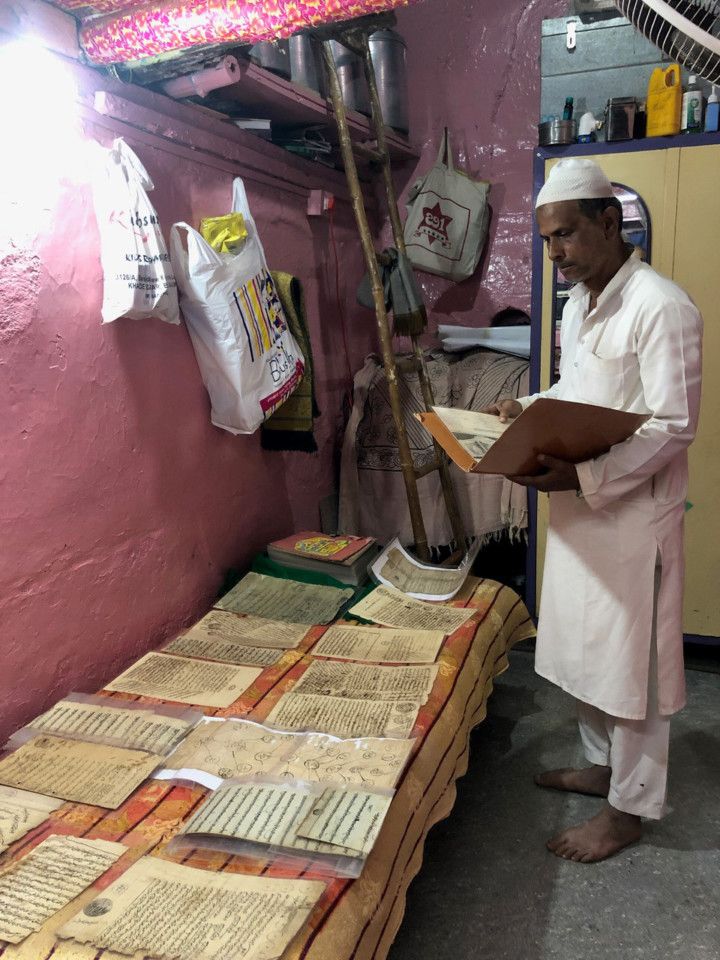
Mughal heirloom
Among the biggest heirlooms of this shrine is a 16th century copy of the Quran that is believed to be calligraphed and gifted by the sixth Mughal Emperor Aurangzeb Alamgir.
“The emperor had actually gifted the copy to the dargah of Khwaja Muinuddin Chishti in Ajmer, we are not sure how and when it reached into the possession of our ancestors. We feel fortunate to have this blessed copy and we are doing our best to preserve it for posterity,” said Ghawwas, taking us through the pages of history.
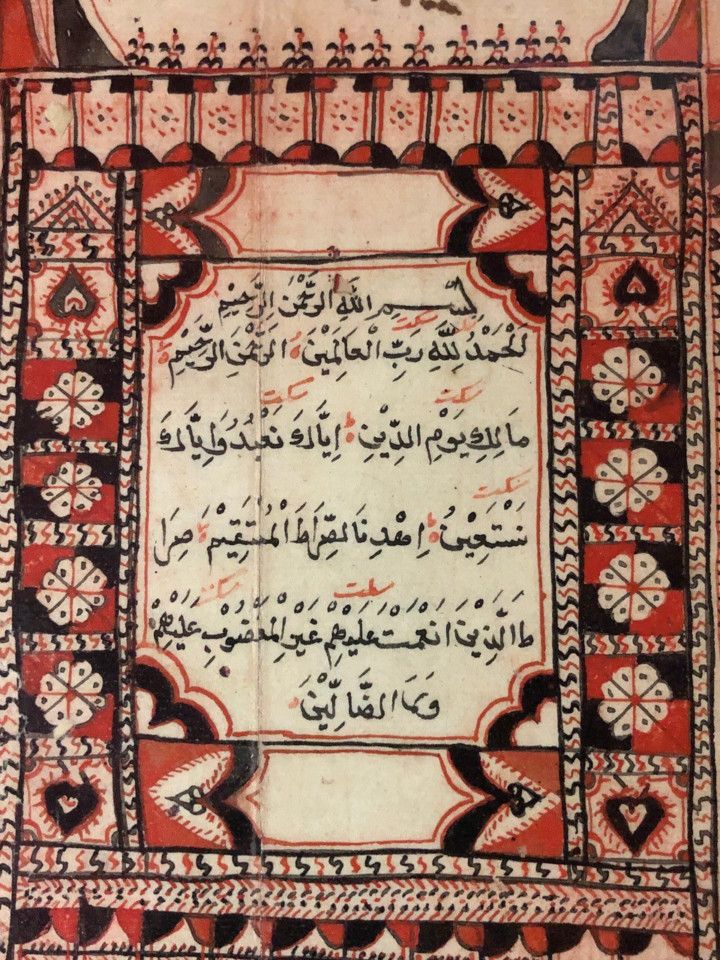
Mughal emperor, Aurangzeb Alamgir is known for expanding the Mughal Empire to its farthest, extending the borders of Mughal India from the Hindukush Mountains in the north to the Kaveri River in the south.
He spent almost half of his five-decade long reign in subduing the Deccan and eventually died in the region, far away from his capital, but not too far from the shrine where one of his rare copies of Quranic calligraphy is found.
Aurangzeb was a man of quiet contemplation
In contrast to his popular image of an expansionist king constantly indulging in warfare, privately Aurangzeb was a man of quiet contemplation, spending time in stitching caps and indulging in Quranic calligraphy.
“It was Emperor Aurangzeb’s practice to gift his calligraphed copies of the Holy Quran to various mosques and shrines, and we were fortunate enough to be one of those who received this favour. This has been in the possession of our ancestors for more than 325 years,” added Ghawwas.
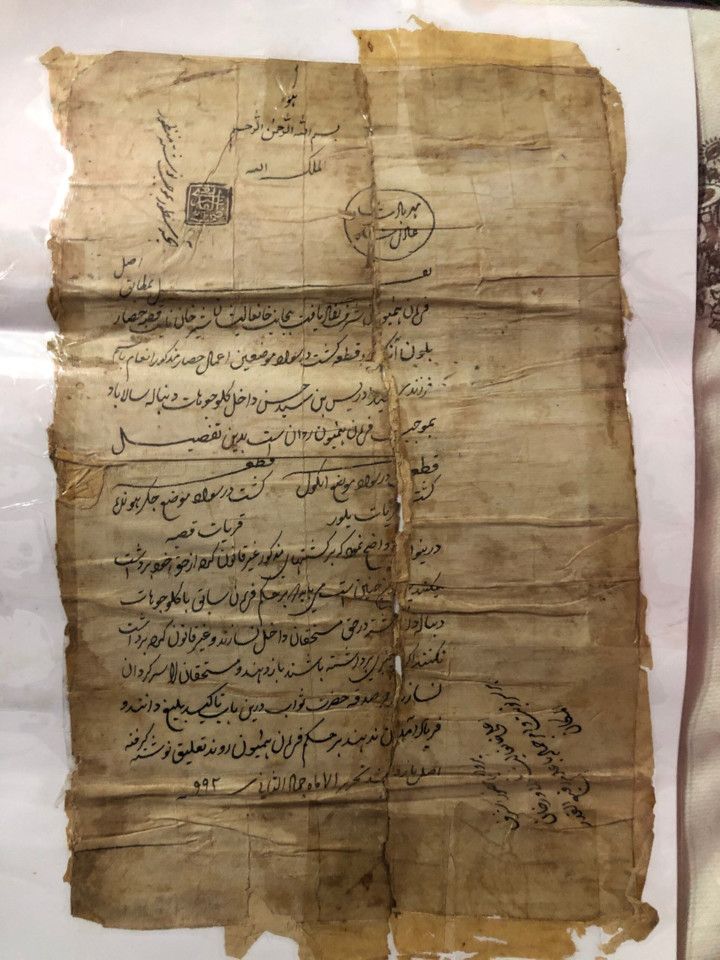
As the caretaker of the mausoleum, Ghawwas is also in possession of centuries old records of the shrine’s connection with various royal dynasties, that includes dozens of papers suggesting royal patronage, firmans and decrees.
Interestingly, much of the treasure trove of the archives was hidden and was discovered only recently.
Hidden by ancestors
“All these records were kept hidden by our ancestors, we didn’t know about it until recently. We discovered much of it in 1991 while we were sorting out old material. Now we are trying to preserve it. We have laminated everything, but we still don’t have the modern means to maintain this treasure,” said Ghawwas, who has kept the heirloom Quran and all the archival material wrapped in cloth in his tiny home.
The archives primarily include orders and decrees in Persian and Modi scripts from the Adil Shahi kings as well as the Maratha rulers.
“In the past, the dargah used to receive a lot of grants from the rulers irrespective of their faith. We have several firmans and sanads issued by the Maratha rulers who venerated Shaikh Badruddin and offered their patronage,” he explained.
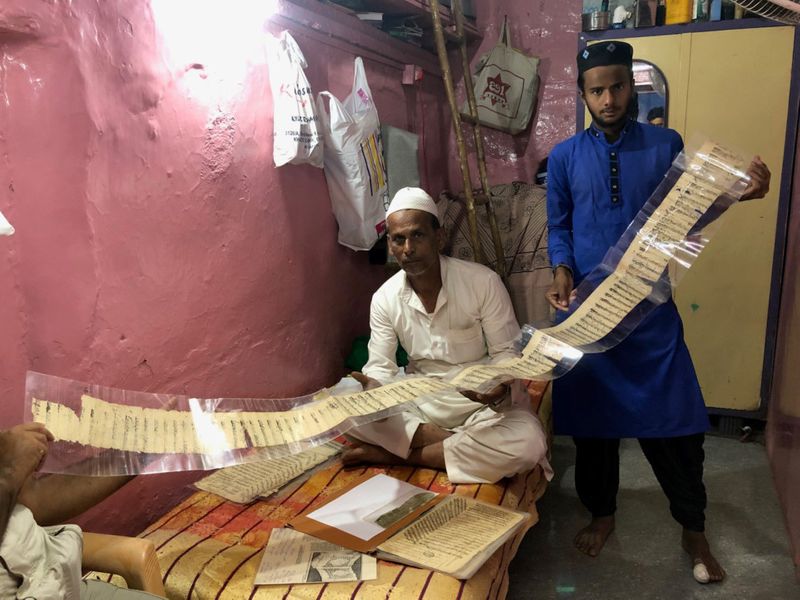
Built in the early 16th century by the Adil Shahi general and the then governor of Belgaum, Asad Khan Lari, the mausoleum has always been under royal patronage, irrespective of who ruled the region.
“We have received land grants from all the rulers of different era, for our role in taking care of this heritage. All these decrees are a testimony to our centuries old heritage. We had seven lakes of the city in our care as a grant. We used to manage irrigation of farm lands in the region and the farmers used to give us a portion of their harvest in return. We lost these benefits when the government brought in a new law in 1982,” said Ghawwas, who continues to take care of his ancestral legacy even as the shrine he manages has lost its former patronage.
Despite depleting resources, the current structure of the 795-year-old mausoleum is well-preserved with some renovation and restoration.
The interiors of the dargah received a recent facelift with Iranian glasswork adorning the walls, the dome and the ceilings.
“This dargah has always been the abode of peace and harmony and we have always had devotees from all religions. We will continue with our age-old tradition of love for all,” said Ghawwas, concluding with a much-needed message of harmony as he wrapped his treasures in soft cloths and stored them back in his cupboard with great veneration.
— Shafaat Shahbandari is a Bengaluru-based independent journalist. He is the founder of Thousand Shades of India, an alternative media platform that celebrates the diversity of India.






